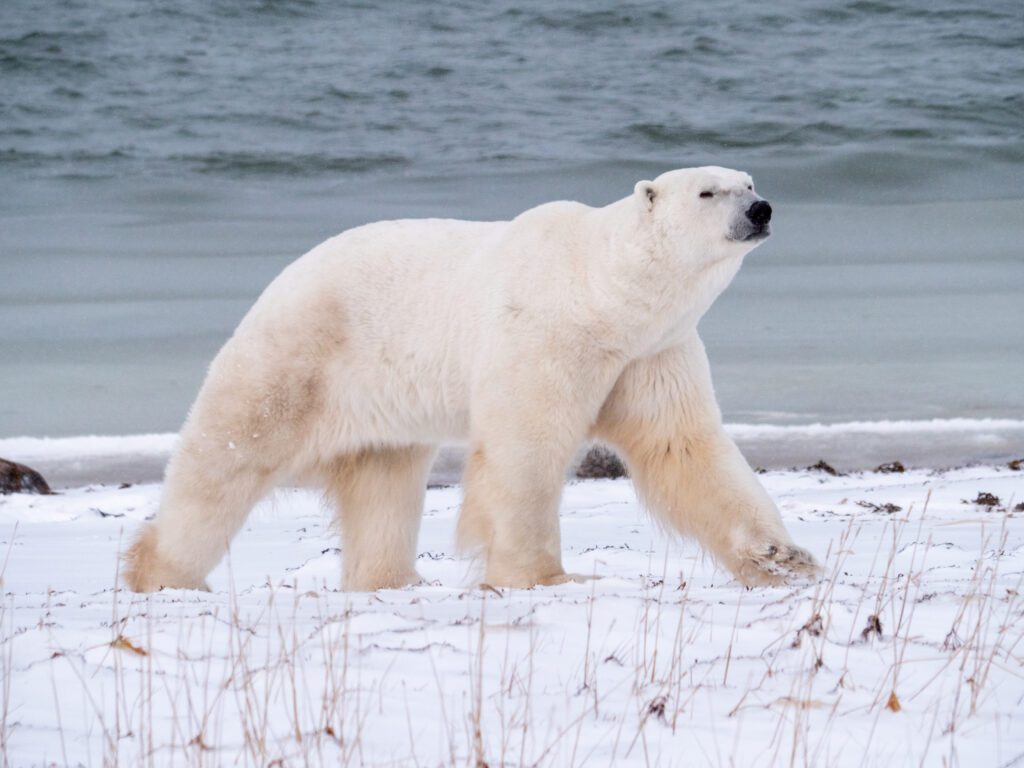Below is a summary of the study we are currently taking part in with Anoki by Dr. Karyn Rode, Research Wildlife Biologist with U.S. Geological Survey – Alaska Science Center
Estimating the Importance of Land-Based, Human-Provisioned Foods in Polar Bears Affected by Sea Ice Loss
The Arctic is warming faster than anywhere else in the world leading to substantial declines in summer sea ice extent. In the southern Beaufort Sea of Alaska, bears have historically spent most of their life out on the sea ice hunting for ringed and bearded seals, their primary prey. But over the past three decades, declines in summer sea ice extent have been associated with a greater proportion of bears in the population summering on land and spending more time there.
Three communities on the north coast of Alaska also harvest bowhead whales during the time that bears are onshore. The remains left by hunters attract large numbers of bears and also provides a food source during a period when there is little to no sea ice off the northern coast of Alaska. However, bears also are attracted to areas close to human settlement creating the potential for increased bear-human conflict. Answering the question of how best to manage whale remains depends on better understanding their nutritional importance to polar bears in the population.
A collaboration between the U.S. Geological Survey, the U.S. Fish and Wildlife Service, and European and U.S. zoos seeks to answer this question by pairing data collected on wild bears with data from bears in zoos. In nature, collars fit on bears provide information on how much time bears spend where whale remains are deposited. Direct observations at the carcass can provide information on how much time bears spend feeding. But estimating how much food they are getting, requires better understanding the size of bears mouths and how much they consume while feeding – a question that can only be addressed in a zoo setting.

Determining the energetic contribution of whale carcasses will help inform decisions on the management of whale remains which can provide a supplementary and diversionary food resource during the ice-free period but also lead to bear-human conflict. This partnership addresses a question important to managing and conserving polar bears in the United States but the data collected from zoos will help inform feeding ecology of polar bears throughout their range.
Videos of female (top) and male (below) polar bears eating blubber in nature. Footage provided by US Fish and Wildlife Service Polar Bear Program.
Ways you can help polar bears:
- Use educated consumerism – buy local products, follow the Seafood Watch Guide.
- Turn off lights when not in use. Replace old light bulbs with energy-efficient bulbs.
- Use proper trash receptacles for things that can’t be recycled. Don’t litter!
- Eliminate Styrofoam – it doesn’t decompose!6. Walk, cycle, carpool, or take public transportation.
- Save water by turning off taps when not in use and take shorter showers.
- Unplug appliances (toaster, hair dryer, laptop, etc.) when not in use.
- Turn off vehicles while waiting rather than idling.
- Turn your thermostat two degrees down in the winter and two degrees up in the summer.
- Avoid the dryer and hang your clothes to dry.
- Donate to the Zoo’s conservation partner, Polar Bears International.
- Assist in a community recycling event.
- Avoid single-use plastics such as straws, grocery bags, utensils, water bottles, and to-go drink lids.
- Plant a tree or garden. Your participation helps save polar bears!
- Come out to Polar Bear Awareness Weekend at the Zoo (Feb. 25 & 26) and/or Defend the Ice Night at the Rochester Amerks!








